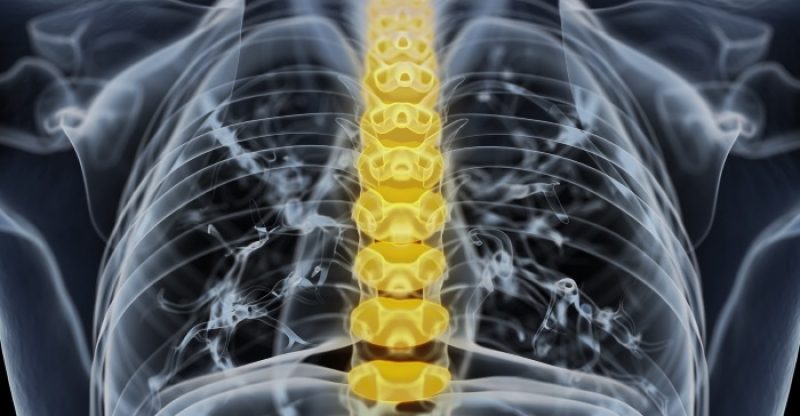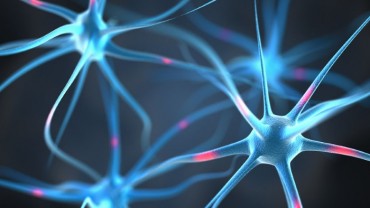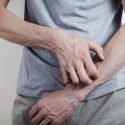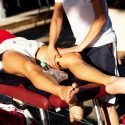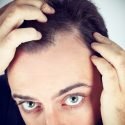Bulging Discs Causes and Effective Natural Treatments
If you live in fear of your back pain, and how it interferes with your daily activities and ability to participate in your family and work, it may be time to make some changes.
If you have a bulging disc that is causing you serious pain or pain that is worsening as you age, then you need help.
If you are a man between the ages of 30 and 50, you are twice as likely to develop a spinal disc problem, and it is possible for you to prevent these problems from developing.
Our guide will help you find the very best natural solutions for your bulging disc back pain, give you tips for preventing bulging discs from happening or getting worse once they occur, and teach you about the causes and symptoms of this painful spinal problem.
Those with bulging discs are often frustrated with their condition because it can be difficult to obtain relief.
You are not alone, as at least one percent of the population is experiencing the symptoms caused by a serious disc problem.
There is hope, though, for preventing further injury and worsening symptoms, and we’ll share with you the very best ways to heal your bulging disc quickly so that you can start enjoying your life again with less pain.
So what causes a bulging disc?
And how do you know if this is really your problem?
Let’s examine the causes and symptoms of this spinal problem.
Understanding Bulging Discs
There many different types of disc problems, which can make understanding your particular problem even more difficult.
While they may have similar names, not all disc problems are the same.
Even healthcare professionals do not always agree on the definition or diagnosis of issues such as ruptured discs, herniated discs, slipped discs, bulging discs, or collapsed discs.
Simplifying all these terms can help us make sense of the cause of your pain.
The bottom line is, most disc problems stem from the same underlying causes.
Your doctor will make her or his diagnosis based on your medical history, your answers to questions about your pain and lifestyle, and your physical examination.
And, for the most part, treatment is very similar for all of these disc problems.
Your spine is comprised of vertebrae that are stacked one on top of the other.
Between each of these bones, you have a cushion that protects your bones from rubbing against each other.
When a disc loses its shape or suffers changes to its structural integrity, it can protrude, or bulge, from its proper location into the surrounding area.
While some bulging discs cause no symptoms, others bulge out enough to compress a spinal nerve, which results in pain.
Once a bulging disc becomes so deformed or degenerated as to break through the shell-like casing of the disc, it becomes what is known as a herniated disc.
Doctors may also refer to a herniated disc as a slipped disc.
While each person’s symptoms differ, herniated discs generally lead to more pain and discomfort than bulging discs.
Herniation is the result of a crack in the harder outer layer of the disc tissue, which allows the soft, inner tissue to push outward (1).
Bulging or herniated discs can occur in differing degrees of severity, depending on how deformed the disc becomes and the symptoms it causes.
Many people have one or more bulging discs, and never even know they have a problem because the disc does not touch a nerve and therefore never causes symptoms (2).
Symptoms of a Bulging Disc
Not all bulging discs cause symptoms, and your symptoms may vary depending on several other factors.
The most common symptoms related to bulging discs include (3):
- Localized pain in one area of the lower or middle back, neck, head, or limbs;
- Sciatic pain or numbness down the legs and in the buttocks;
- Pain or tingling that radiates down to the toes, fingers, or wrists;
- Weakness or numbness in the area surrounding the injured disc;
- Headaches;
- A difficulty with normal movements due to weakness, throbbing, or aches.
While nearly all disc problems occur in the lower back, also known as the lumbar area, if your damaged disc contacts a nerve that runs to other parts of your body, you may experience problems in those areas, as well.
Because your spine is the highway for all the nerves that serve your lower body and extremities, a damaged disc could potentially cause these symptoms in many different parts of your body.
Your symptoms are also a clue to where your bulging disc is located.
If you are experiencing pain in your hands, back, chest, and abdomen, your disc problem most likely lies in your thoracic spine.
If you have pain and symptoms in your head, shoulders, neck, fingers, hands, wrists, or arms, you most likely have a cervical bulging disc.
The most common type of bulging disc, in the lumbar area, causes pain in the feet, legs, buttocks, and abdomen.
The Causes of Bulging Discs
It is possible to develop a disc problem at any age.
Most people, however, see this type of spinal disorder begin after the age of 30.
Men are also twice as likely as women to develop disc problems, and researchers do not yet fully understand why.
Your discs are meant to provide cushioning between the small bones of your spinal column.
These natural shock absorbers are made from two distinct layers.
The soft, gel-like inner layer, called the nucleus pulposus, is made of cartilage.
The harder, outer layer, called the annulus fibrosus, helps the disc maintain its shape and holds the soft inside together.
As you age, the nucleus pulposus inside your discs naturally loses elasticity and becomes more fibrous, which means it does not flex as much.
A load of your daily movements is then shared more with the annulus fibrosus, which in turn can crack if placed under too much pressure.
These fissures allow the inner, softer tissue to push out, causing problems.
The natural aging process is degenerative to the discs in your back, but this is not the only way discs can begin to bulge.
If you are injured, such as from playing contact sports or a trauma, this can cause disc problems.
Poor posture or leading a sedentary lifestyle can place undue pressure on your lumbar region, leading to disc problems.
When a disc bulges or becomes herniated, it expands beyond its normal location, which may put it into contact with sensitive nerves that connect to other parts of your body.
When the bulge protrudes inward toward your spinal canal, this triggers the intense, sharp pain that is most commonly associated with a disc problem.
Your spine allows you to move, twist, bend and turn, and when you place your spine under stress this can cause damage to, or lead to further degeneration of, damaged discs.
Both the upper and lower areas of your spine – your cervical and lumbar regions, respectively – move more than your thoracic, or middle spine, so you are more likely to experience damage in these areas.
Your thoracic spine is fused with your rib cage, making it less flexible which thus leads to far fewer injuries or problems than the other parts of your spine.
While the natural degeneration of discs causes many of the spinal problems people experience as they age, there are other factors that contribute to bulging discs and other disc problems.
These include:
- Injury to the neck or spine;
- Loss of flexibility or mobility in your spine;
- Being overweight, which places more pressure on your spine;
- Chronic inflammation caused by smoking, drug use, stress, or a poor diet;
- Being sedentary, which means your spinal muscles will lack strength;
- Degenerative diseases;
- Using poor form while exercising;
- Repetitive neck and back strain, such as from a physical job;
- Poor posture;
- Being tall, which places more pressure on your discs.
Diagnoses and Conventional Treatments
To diagnose your spinal problems accurately, your doctor will need both to do a physical exam and to take your medical history.
Because of the nature of disc problems, X-rays are not useful for identifying troubled areas, and other types of scans, like MRIs, are only helpful in very specific situations.
Don’t worry if your doctor opts not to perform a scan when diagnosing your disc problems.
MRIs are usually only helpful if your disc problems are causing numbness or paralysis; if you have impaired bladder or bowel function; or if you have continued or unbearable pain despite treatment.
These could be signs of something else happening in your spinal column.
Conventional medical treatment for bulging discs usually involves medications to relieve pain, decrease inflammation, or relax muscles.
While these may help alleviate symptoms in the short term, they do not address the underlying cause of your pain, nor can they prevent future disc problems from developing.
About one in ten people with bulging or herniated discs will have corrective surgery to treat their problem.
For the majority of people, though, disc problems can heal without surgery in a few months.
This happens when you make efforts to lower inflammation and strengthen muscles that can help hold your spine in place.
Once you have a disc problem, though, you are susceptible to developing other back problems, so treating your bulging disc quickly and appropriately is essential (4).
Now that you have a better understanding of what causes your back pain, let’s look for ways to help you feel better.
We’ve compiled all the very best natural remedies that can help relieve your pain from bulging discs or other spinal disc problems.
Natural Relief from Back Pain
More people than ever are seeking natural solutions to their medical issues, as they wish to avoid both invasive and expensive surgery and the potentially dangerous side effects of many medications.
Using natural therapies to treat your bulging disc problems is a safe and effective way to address your pain and help you regain your strength.
Chiropractic Care
Spinal adjustments from a qualified chiropractor are among the most effective treatments for the problems associated with bulging discs.
A chiropractor should be able to help determine the nature of your bulging disc problem and identify the underlying cause or causes.
Once this information is known, chiropractic adjustments can help realign your vertebrae and discs, alleviating protrusion that is causing your pain.
Chiropractic care is especially helpful for treating sciatic nerve pain that is a result of a bulging or herniated disc (5).
Chiropractors perform many different types of adjustments, and which type you need will depend on your specific circumstances.
You may require muscle stimulation, physiotherapy, flexion-distraction, or other manipulations or treatments.
Your chiropractor can explain each procedure to you in detail, including how it helps alleviate your symptoms.
Physical Therapy
Physical therapy involves exercises specific to your problem that are designed to improve your strength, flexibility, and range of motion, all of which may be contributing to your spinal problems.
A physical therapist will evaluate your symptoms and current level of function, then recommend exercises that target your problem areas.
Exercises prescribed by your physical therapist can make it easier to move around and complete normal daily activities.
They can also help you address some of the issues that may be causing you pain, such as poor posture.
Learning to have proper posture requires practice, and your physical therapist can help design a program of exercises that, over time, can correct the compensations your back is making for poor posture that could lead to even more problems in the future.
If you are interested in doing other exercises and building up your strength, your physical therapist can also help you design workouts that are safe for your back.
When you are doing physical therapy, pay close attention to how your back is responding to the various exercises.
And remember that rest is an important part of any exercise program, especially when treating a spinal problem.
Physical therapy is a place to learn appropriate exercises and proper form under the guidance of a professional so that you can continue these movements at home.
This will help build more strength in your back, and prevent future injuries, as well.
Get Moving
Those who are physically active are less likely to have problems with mobility and have fewer injuries or problems with inflammation.
If you sit for long periods, this can make back pain due to bulging discs even worse because your muscles are losing strength, putting more pressure on your spinal column to hold you up.
This is especially true if you are overweight, which puts added pressure on your body.
Unless your pain is so severe you cannot move, you should walk every day, and engage in other types of exercise that you enjoy.
Exercises that focus on building your core strength are especially good for treating back pain.
Wear a pedometer to track your progress, with a goal of taking more steps today than you did yesterday.
Add distance or speed slowly, so as not to cause more injury, but do get walking to help your back heal.
Other types of exercise that are good for bulging disc problems include strength training in the pool, using your body weight as resistance for strength training, cycling, swimming, and dancing.
Activities like yoga, Pilates, and Tai chi can also help you improve your flexibility and balance, which are great for promoting a healthy back.
Choose low-impact exercises that do not damage joints.
You should stretch and try to lengthen your spine every day, as well.
Stretching is also helpful for correcting poor posture.
When you make a choice to be active and build your strength, you will enjoy lower levels of pain, inflammation, and stiffness, and have improved overall mobility.
Stretch Regularly
Doing regular stretches that work your back, hips, torso, and legs can help you maintain a healthy spine.
The muscles in all of these parts are interconnected, and when one area is very tight or inflexible, it can cause problems for all the others.
When you stretch your hips, for example, you are less likely to have tightness in your lower back that can lead to misalignment or pain.
Stretch every day, both in the morning and at night.
If you have a sedentary job or work behind a computer all day, you should also make efforts to get up each hour to stretch your hips, back, neck, and shoulders.
This can help maintain flexibility in your spine and keep your muscles strong, eliminating pain and pressure around your bulging disc (6).
Make Sure to Rest Your Back, Too
If you overwork your muscles or joints in your back, you can increase inflammation and pain, as well as further weaken discs.
Getting quality rest between workouts is important, and be sure you are sleeping well for at least seven to nine hours each night.
If you are training or working out heavily, these rests are especially important for keeping your hormones balanced and reducing your risk of more injury.
Lower Stress Levels
Emotional and physical stress can cause muscles to remain in a heightened state of tension.
This can lead to even more back pain for your bulging disc.
Stress also makes it harder to deal with the pain associated with a bulging disc or other spinal problem.
Lowering your stress levels is a good way to keep your muscles loose and flexible, and ensure your back isn’t suffering because of your overly tense muscles.
Not only will you feel better emotionally, but stress management is also healthy for your body.
Fix Your Posture
The way you hold your spine, neck, and head are all part of your posture.
Whether you are active or sit at a desk most of the day, you should always use correct posture when sitting, standing, or lifting.
This will help protect your back from injury, strengthen the muscles that support your spinal column, and help alleviate back pain.
Sitting is actually harder on your spine than almost any other activity.
Because many people slouch or hunch over when they are sitting, this overstretches some of your spinal ligaments, forces other back muscles to compensate, and places strain on your troubled discs.
Even with excellent posture, sitting all day is still hard on your back, hips, and other joints.
Be sure you walk around at least once per hour, that you stretch every 20-30 minutes, and that you walk every day either before or after work.
Eat to Decrease Inflammation
When your body is in a heightened and chronic state of inflammation, you can experience weakness in your joints, muscles, and even your bones.
This makes it much harder to treat disc problems.
While inflammation may not be the cause of your bulging disc or another spinal issue, it can make it extremely hard to recover from this condition.
Eating a diet that includes nutrient-dense foods that can help heal your body can lower your overall levels of inflammation.
Start by eliminating processed foods, anything high in refined sugars or salt, grains that are not whole, alcohol, and foods that contain lots of chemicals.
Eating a whole-foods diet that contains lots of plants will help you maintain a healthy weight, and ensure you get the proper vitamins and minerals to keep inflammation in check.
Leafy, green vegetables, fermented foods, healthy fats, clean sources of protein, and whole fruits and vegetables are excellent additions to your diet that can help decrease inflammation.
Other Remedies for Pain Reduction
Acupuncture is a technique from traditional Chinese medicine that uses tiny needles to target specific points on the body that control functions and processes.
For those with chronic back pain, acupuncture has been highly successful in relieving pain and reducing the severity of other symptoms (7).
If you have a bulging or herniated disc, acupuncture may provide some relief from your symptoms.
Heat or ice may be helpful for relieving back pain caused by sore muscles that may be trying to protect or compensate for your bulging disc.
If you have just started experiencing back pain due to a bulging disc, ice is your better choice, as cold reduces inflammation and blood flow to the area.
If ice does not seem to be helping, or you are trying to loosen tight muscles in other parts of your back or neck, a heating pad may be a good choice.
Never use heat or ice for longer than 20 minutes, and repeat the use of this remedy several times per day.
Some people may find that one or both of these approaches can aggravate pain or other symptoms, so this may not work for everyone who has a bulging disc or other spinal problem.
Experiment to see if this will work for you.
Massages can also help some people with disc problems, but like heat and ice, this option does not work for everyone.
Massage can help relieve tension in the surrounding muscles, and release hormones that calm you and relieve pain, but it may not be right for everyone.
Talk to your doctor, chiropractor, or physical therapist about massage therapy to see if you are a good candidate before getting a massage.
You should always tell your massage therapist about any spinal problems you may have before your massage.
Precautions
A bulging disc occurs when the soft tissue inside the cushioned discs between vertebrae begins to bulge into other spaces.
These bulges can come into contact with nerves, which then signal pain and tingling.
Once the harder outer covering of your disc is ruptured, you have a herniated disc.
Bulging or herniated discs can result in pain, tingling, numbness, and weakness.
While this can be restricted to your spine, these symptoms can also affect other areas of your body, if the affected nerve is one that sends signals to other areas beyond your spine.
Depending on where in your spine your disc is bulging, you may experience symptoms in your head, neck, arms, hands, legs, feet, or torso.
Most disc problems occur in the lower back, though, with symptoms that can affect the back, buttocks, legs, and feet.
After you have been diagnosed properly with a disc problem, there are many measures you can take to help your back stay strong and flexible and to relieve the pain and other symptoms caused by your bulging disc.
The best natural treatments for bulging discs include seeing a chiropractor, doing physical therapy, staying active, eating a diet that reduces your inflammation, stretching, lowering your stress level, getting plenty of rest, using ice or heat, and getting a massage.
The leading cause of disc problems is deterioration due to age.
Injuries, being overweight, leading a sedentary life, eating a poor diet, living with too much stress, or having a degenerative disease can also raise your risk of having a disc problem.
Once you have a disc problem, you are more likely to develop other back problems later on.
FDA Compliance
The information on this website has not been evaluated by the Food & Drug Administration or any other medical body. We do not aim to diagnose, treat, cure or prevent any illness or disease. Information is shared for educational purposes only. You must consult your doctor before acting on any content on this website, especially if you are pregnant, nursing, taking medication, or have a medical condition.
HOW WOULD YOU RATE THIS ARTICLE?
